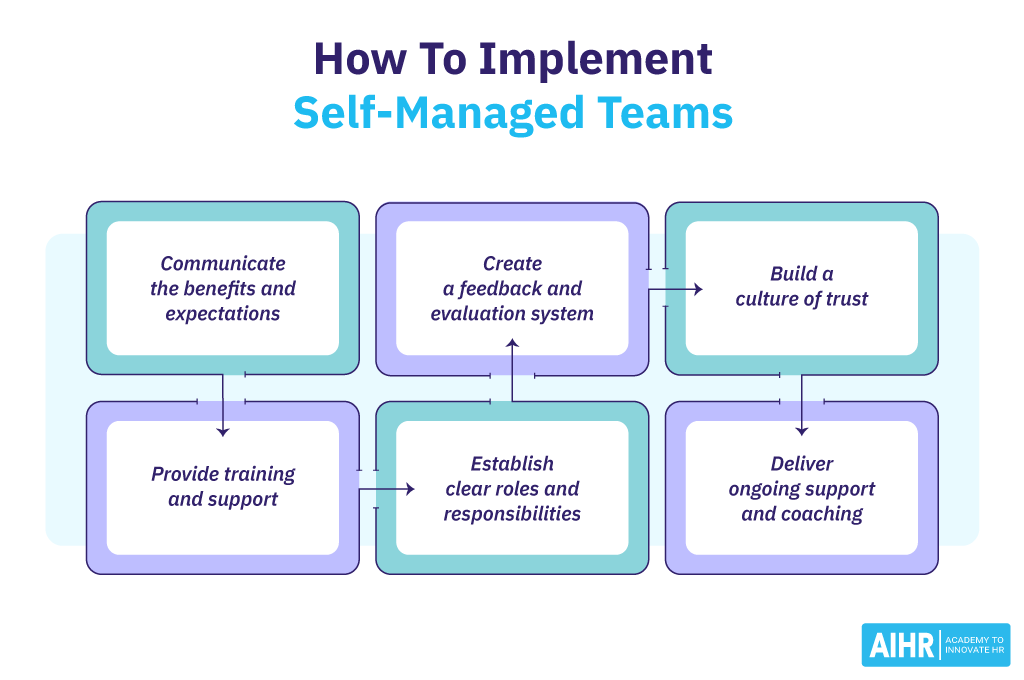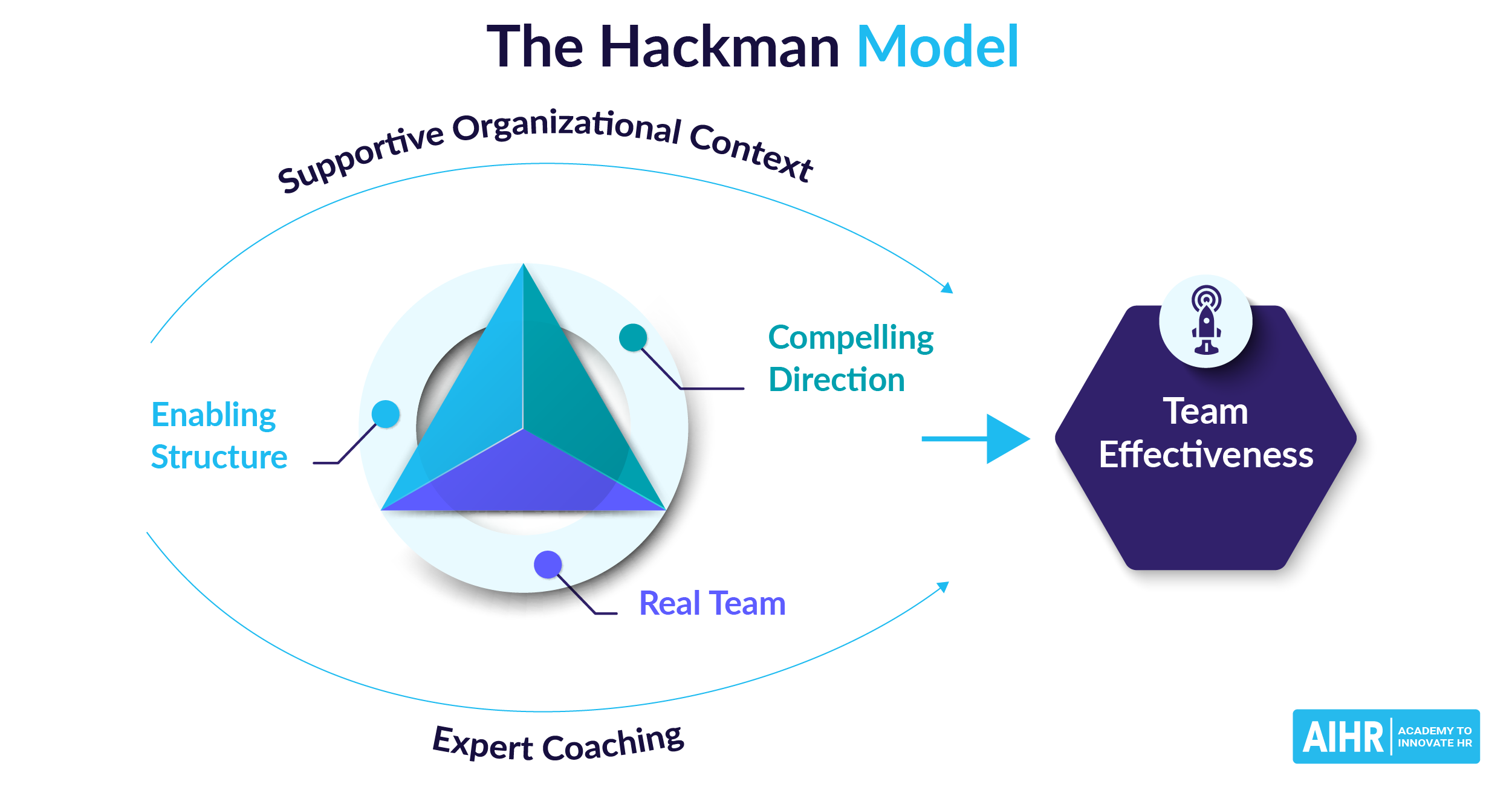Self-Managed Teams
What are self-managed teams?
A self-managed team is a group of individuals responsible for organizing and handling their work without a traditional hierarchical structure or external direction. Members of a self-managed team empower themselves to make decisions and solve problems with the support and trust of the team and company.
What is the goal of a self-managed team?
The goal of a self-managed team is to empower its members to take ownership of their work and make decisions that align with the purposes of the group and organization.
In these teams, members are typically given a high level of freedom and are accountable for organizing and managing their work without direct supervision from a manager. This work may involve setting goals, prioritizing tasks, and deciding how to achieve their objectives.
This approach can foster a sense of ownership and accountability among team members and encourage collaboration and creativity. Companies that use self-managed teams believe giving more responsibility and autonomy can lead to better outcomes.
Examples of self-managed teams
One example of a self-managed team is the team responsible for developing and maintaining the Linux operating system. Linux is an open-source project, meaning anyone can contribute to the advancement and improvement of the software. The team comprises volunteers and professionals worldwide who collaborate and coordinate their efforts through online communication and collaboration tools.
Some other examples of businesses that use this team structure include:
- Zappos: The online shoe and clothing retailer uses a flat organizational structure and empowers its employees to make decisions and solve problems independently.
- W.L. Gore & Associates: Has a decentralized business structure and encourages employees to take the onus of their work and make decisions that align with the company’s goals.
- Valve Corporation: Has a unique company structure where teams have free will to develop and release their games, with minimal management oversight.
How do self-managed teams work?
Self-managed teams typically operate using a decentralized and flat organizational structure, where team members make decisions and handle their work.
Key elements involve:
- Clearly defined roles and responsibilities: Each member must understand their roles and responsibilities. For instance, a self-managed team working on a software development project may have one member responsible for coordinating the overall project. In contrast, others focus on specific tasks such as coding, testing, and user experience design.
- Collaboration and communication: Self-managed teams rely heavily on teamwork and communication to succeed. Team members may need to rely on each other for help and guidance to complete their work. This action may involve regular meetings or check-ins to discuss progress, challenges, and opportunities for improvement. It may also include using collaboration tools and technologies, such as online project management platforms, to share information and coordinate efforts.
- Culture of ownership and accountability: Promoting a successful self-managed team requires a culture where team members feel responsible for their work. This encouragement may involve providing feedback and recognition for team members who take ownership of their work and make decisions that align with the team’s goals. It may also include establishing processes for managing conflict and disagreement and providing support and guidance to team members.
What are the pros of self-managed teams?
Self-managed teams can offer many benefits to corporations, including increased flexibility, collaboration, and accountability.
- Increased flexibility: They can be more flexible and adaptable than traditional hierarchical teams. Because team members are independent and responsible for organizing and managing their work, they can quickly respond to changing priorities and opportunities. This reaction can be beneficial in fast-paced or uncertain environments where organizations must adapt and innovate.
- Increased collaboration: They can foster a culture of collaboration and inclusiveness, where all members can contribute their ideas. This way of business can lead to better decision-making and problem-solving and boost trust among team members.
- Increased accountability: They can promote a sense of ownership and responsibility among team members. When team members are allowed to take ownership of their work, they are likely to feel invested in the triumphs of the team and the organization. This empowerment can drive better performance and results.
What are the cons of self-managed teams?
Some potential drawbacks include the following:
- Lack of clear direction: Without a designated leader, these teams may struggle to set clear goals and direction, leading to confusion and lack of focus.
- Conflict and disagreement: They can also be more prone to conflict and discord. Because team members can make decisions, there may be more opportunities for disagreeing ideas and perspectives. This clashing will lead to tension, frustration, and dysfunctional conflict within the team if not properly managed.
- Dependence on collaboration and communication: They rely heavily on teamwork and communication to succeed. Team members need to be able to cooperate effectively and communicate to ensure the team can achieve its pursuits.

How to implement self-managed teams
If an organization is considering implementing self-managed teams, several key steps can help ensure a successful transition:
- Communicate the benefits and expectations to all stakeholders, including team members and leadership.
- Provide training and support for team members to develop necessary skills, such as conflict resolution, decision-making, and communication.
- Establish clear roles and responsibilities for team members, including how they collaborate and make decisions.
- Create a feedback and evaluation system to regularly assess the team’s performance and identify areas for improvement.
- Build a culture of trust where team members feel comfortable taking ownership and accountability for their work.
- Deliver ongoing support and coaching to help the team succeed and continue to grow and develop.
Key takeaway for HR
While implementing self-managed teams can be challenging, the benefits of increased ownership, accountability, and greater adaptability and flexibility make it a worthwhile consideration for any organization looking to drive success and innovation.







